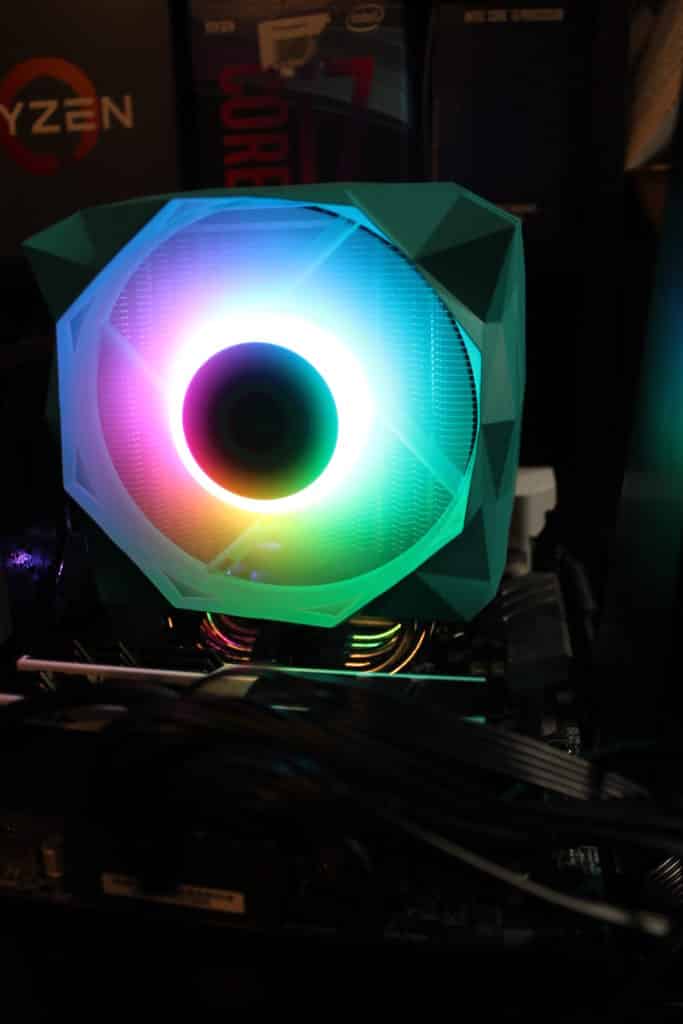Test Setup
We will use our standard air cooler test rig which you can read more about in this article. We’ve made a pair of changes by swapping in a Radeon R9 290X in the graphics slot and upgrading the test bench to a Lian Li PC-T60B. The new test bench gives a bit more ventilation and improves heat transfer by being aluminum instead of MDF.
In short, we are using a Ryzen 7 2700X set to all core frequencies of 3.7GHz and 4.1GHz with PBO disabled to allow for a constant level of heat production. We will run loops of CineBench R20 at various fan levels and record the observed temperatures. We will also compare it to the other coolers we have tested thus far.

Installation
Installation on an AM4 socket can often involve swapping out the backplate on the motherboard and attaching some form of mounting setup on the other side to get the cooler to stick. In the case of the Iceberg Thermal IceSLEET X6, it utilizes the standard backplate that comes with AM4 motherboards and mounts its bracket to it.
Upon installing the brackets, we noticed that the backplate was not snug against the motherboard as we typically expect from other mounting solutions. Once we got the heatsink installed and mounted, the backplate was pulled taught against the motherboard.
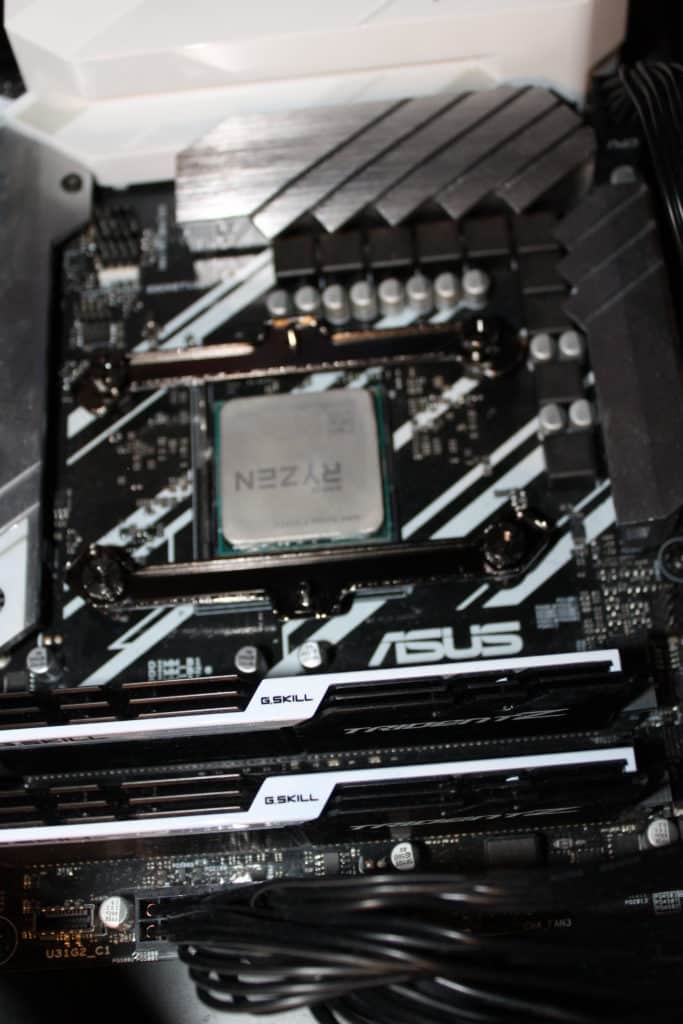
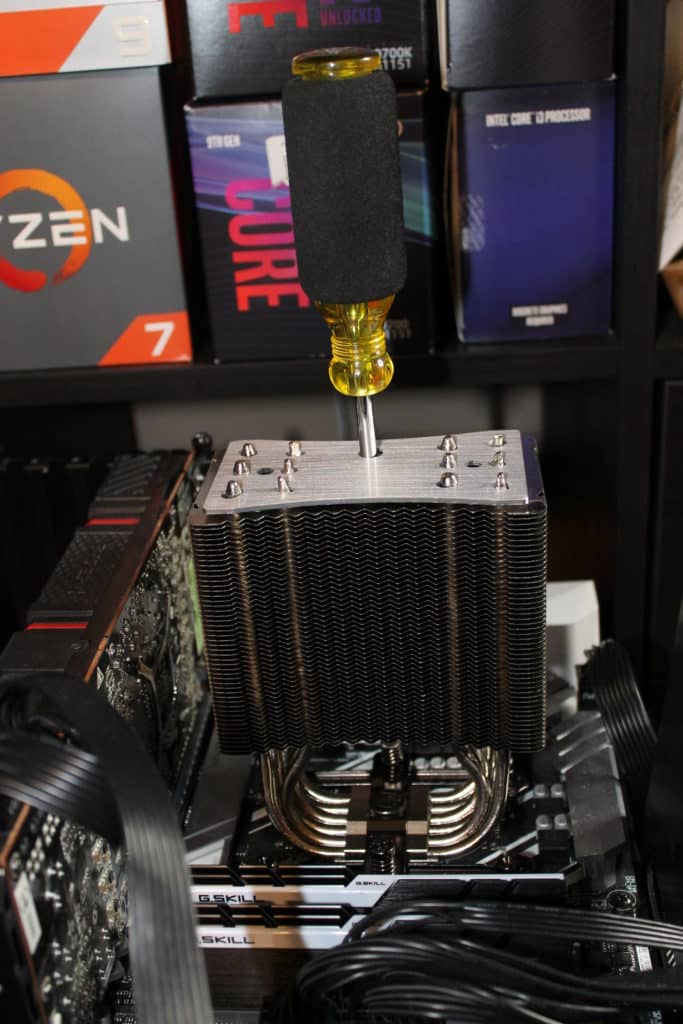
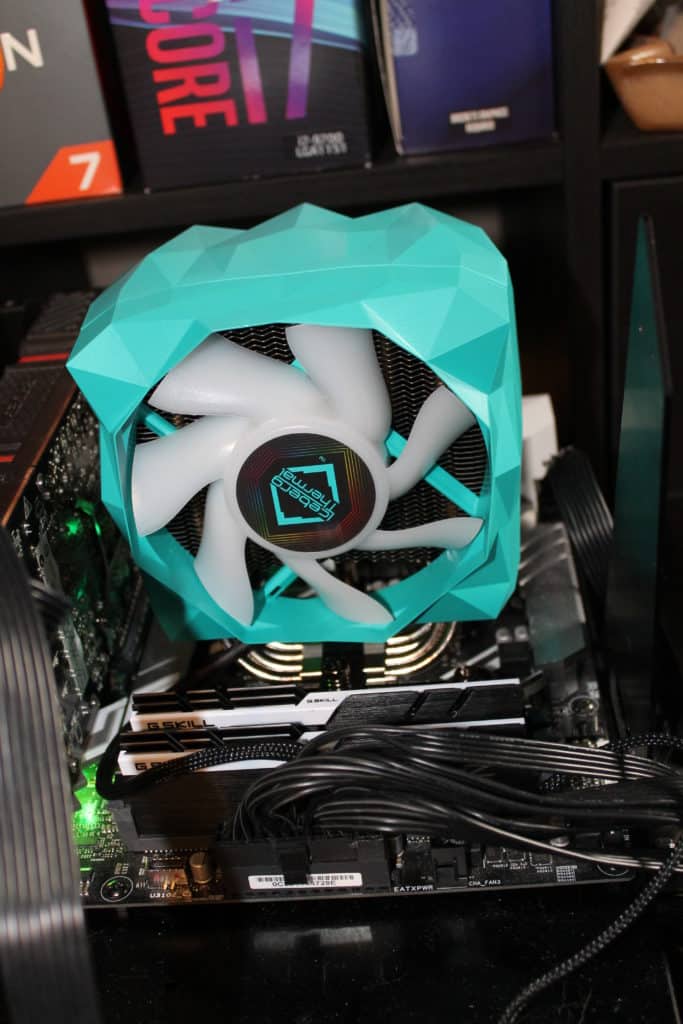
Installation required removing the shroud and fan from the cooler and using a screwdriver to secure the bracket over the cold plate to hold it down. Re-assembly of the fan and shroud was significantly easier than putting the IceSLEET X7 back together as it was only in two parts. Clearance around the socket and RAM was good.
One downside to the fan wire is that it only gives about 8″ of wire between the PWM header and the ARGB header. This makes it difficult to plug both in without extension cables when your CPU fan header is at the top of the board and ARGB header is at the bottom.
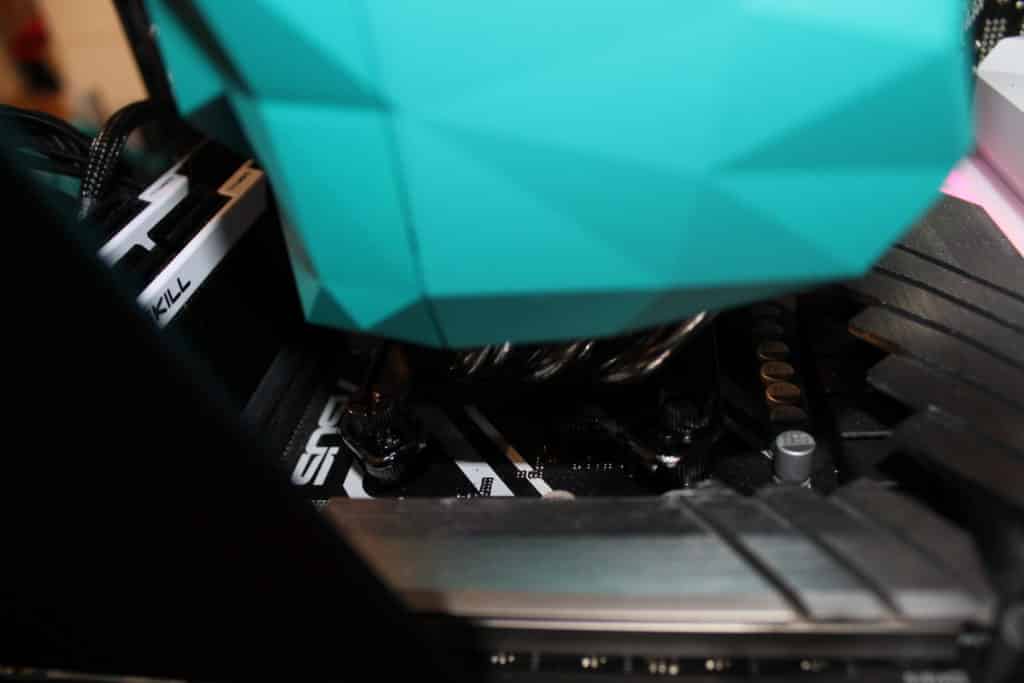

With everything comfortably situated, let’s see if the Iceberg Thermal IceSLEET X6 is ready to chill!

